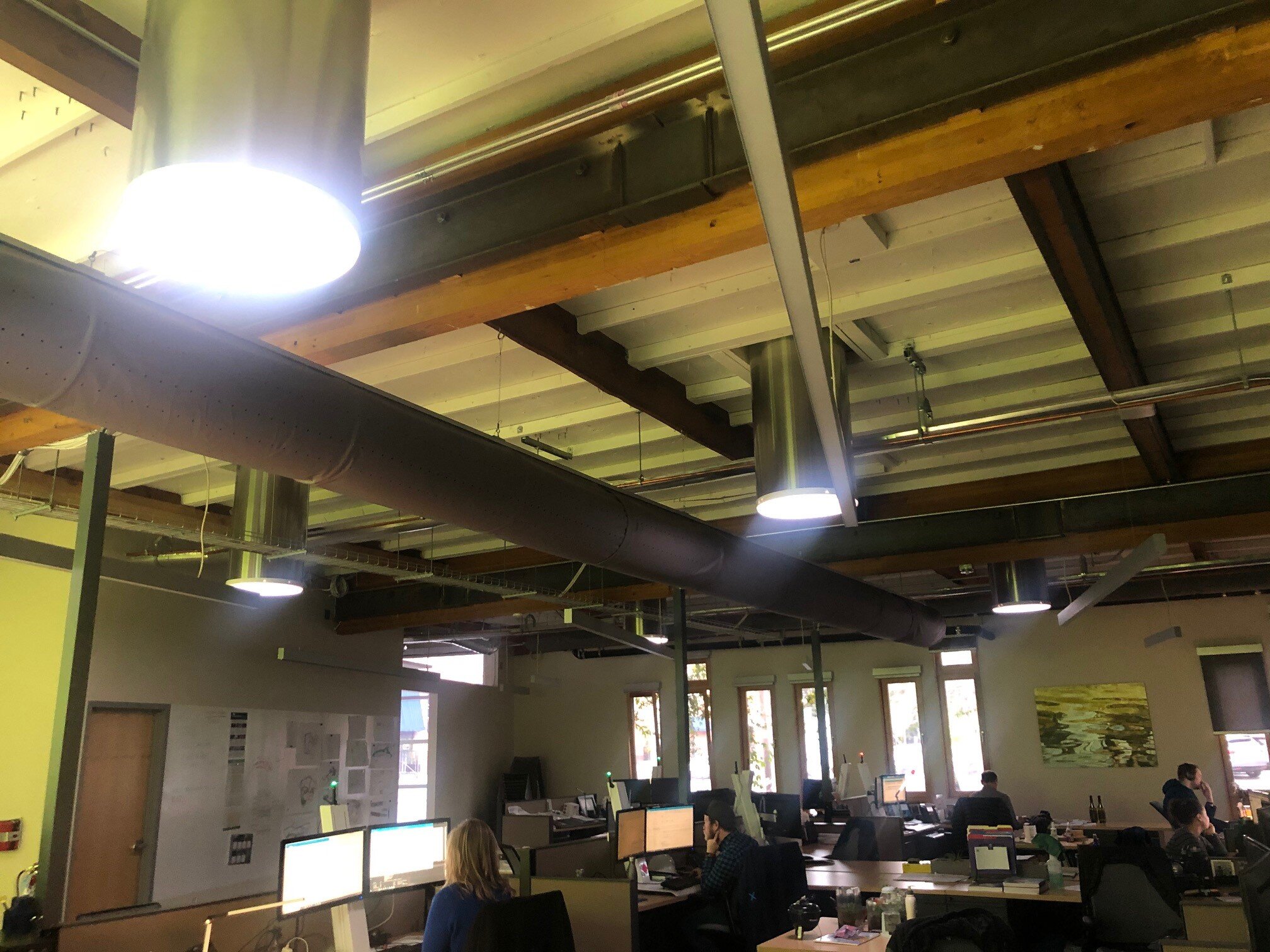Sacramento building wins global distinction for sustainability, serves as model for city
A few years ago, the low-slung print shop building at 930 R St. was a humdrum 1970’s box with a wood shake roof.
Today it’s an environmental showpiece that recycles its own waste, produces its own power and uses rainwater to flush toilets and water plants. In 2018, it became only the 18th building in the world and the first building in California to be certified as a Living Building by the International Living Future Institute.
The building was transformed by Architectural Nexus, a Utah-based architecture firm that came to Sacramento as a result of a merger and opened a new office here. Focused on providing sustainable solutions to clients, the firm’s principals decided to put their best ideas into practice.
Bruce Monighan, Urban Design Manager for the City of Sacramento, said the city worked closely with the company to adapt the city’s permitting requirements to accommodate such an unusual structure. He sees the building as a model that Sacramento and other cities should replicate as they work toward reducing carbon emissions.
Buildings represent the largest source of carbon emissions worldwide, Monighan noted. The Mayors’ Commission on Climate Change led by Sacramento Mayor Darrell Steinberg and West Sacramento Mayor Christopher Cabaldon has identified changes to building design as a major way to fight climate change.
“If we stop doing harm with our buildings, that’s not enough,” Monighan said. “We need to start doing good. This building does that.”
Unlike the better-known LEED certification buildings often tout as a badge of sustainability, the Living Building Challenge measures how a building actually performs for 12 months after it comes online, not just the specifications of its construction.
Arch Nexus is not hooked up to the city sewage system. Blue plastic bins produce a steady hum in a utility room as they compost human waste from the toilets. Rainwater collected in large stainless steel cisterns is used to flush toilets and water the living wall of plants just inside the doorway. Tubes funnel natural light into the workspaces, and the windows can be opened to take advantage of the breeze.
Solar panels on the roof produce 170 percent of the electricity needed to run the building. “SMUD cuts us a check every year,” said Peter McBride, an associate architect with the firm.
Employees can use bikes that hang from the wall inside the building or borrow a company electric vehicle. Landscaping includes a vegetable garden and edible plantings, including blueberry bushes and strawberries. The public is welcome to pick them.
Recently, architects with the firm have brought their sustainable ideas to bear on building housing for the homeless. A tiny home built by the firm is being used by the Block Project in Seattle, which places tiny homes in backyards for homeless people matched with the homeowners.






